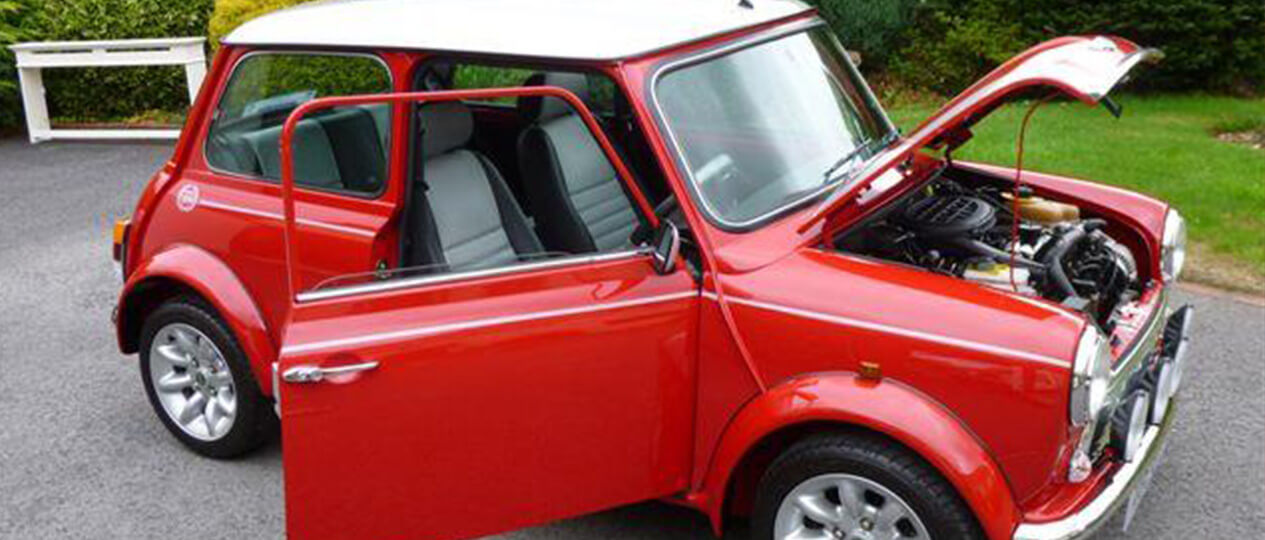The seventies marked a time of political instability, industrial unrest and economic decline, which resulted in riots and strikes from miners, dustmen and postal workers, among other groups.
The social and political landscape of the seventies significantly affected the British motor industry, which was at its peak in the 1960s but had now started to decline. Ford’s presence started to become more and more prevalent in the British market, with the company being later joined by the likes of Peugeot and other foreign manufactures.
Foreign cars entering the UK market meant that British consumers had more freedom and choice in what car they could drive. Although it was faced with more competition than ever before, the Mini remained a popular choice of vehicle among British car buyers.
Travelling became cheaper in the ‘70s, allowing people who couldn’t travel before to venture to almost all parts of the world. The growing travel and tourism markets, coupled with foreign competitors selling their cars to UK consumers, meant the 1970s was a better decade than ever for Mini to take its business abroad.
At the start of the decade, the Mini Cooper design was licensed in Spain by Authi and in Italy by Innocenti. Both companies went on to manufacture the Authi Mini Cooper 1300 and the Innocenti Mini Cooper 1300. Later on in the 1970s, Innocenti started to manufacture the Innocenti 90 and 120, which were designed by Italian company Bertone and based on the Mini. Bertone also created the Innocenti De Tomaso, dubbed the company’s Mini Cooper equivalent.
UK Mini was now under ownership of British Leyland (BL), who decided to drop both the Austin and Morris labels from its vehicles, which meant that Mini became a marque in its own right. BL discontinued the 1275cc Mini Cooper S in 1971, although Innocenti continued production of the car for some time after. BL also decided to drop the Cooper label from the cars, supposedly because the company no longer wanted to pay royalties to John Cooper for the use of his surname. The ‘Cooper’ would only return to the scene 20 years later.
With the discontinuation of the Cooper S, the only sport model left in production was the Mini 1275GT – and it stayed that way for a decade. The 1275GTs wasn’t as fast at the Cooper S, but they were cheaper to run, buy and insure, and were the first Minis to be fitted with a rev-counter.
During the seventies, BL continued to manufacture the classic ‘59 ‘round-front’ Mini with the line-up including the 850cc and the 1000cc models. In 1969, the Mini Clubman hit the market and sported a unique squared-off nose. The Clubman was also manufactured in an estate version, which was said to replace the Austin Countryman and the Morris Traveller. The new Clubman and the 1275GT boasted easier under-bonnet access and were safer cars overall, despite being more expensive and less aerodynamic than their predecessors.
At first, production of the Clubman and 1275GT was slow due to numerous changes in production, which included a tooling relocation from Cowley to the Longbridge plant. This meant that very few cars hit the consumer market before early 1970. The early Clubmans were fitted with cross-ply tyres despite the fact that radial tyres had become a manufacturing standard. From 1973 onwards, all new Minis were fitted with radial tyres, though cross-plies were still offered via special order – saving British consumers a total of £8.
In the Australian market, production of round-nosed Mini’s ceased in 1970 due to the release of the Clubman. From 1971, all Minis sold in the country boasted the Clubman front including the Australian Van, which became the only Clubman Van to be sold in the world.
A car that was specifically marketed in holiday locations was the Mini Moke, which was in production from 1964 to 1989. The Moke was fitted with a v-twin engine and had 4-wheel drive. It was initially intended for use by the British Army, but its inability to tackle steep gradients meant that it didn’t quite make the mark. However, it soon became popular with consumer and domestic markets – particularly in locations such as Macau and Barbados – where they were also used for policing.
By 1977, Mini enjoyed global fame, with more than four million cars sold worldwide.
Mini in the 1970s: Fun Facts
– 1971 was the best year for sales of Minis, with over 318,000 cars being produced.
– In 1976, actress Lindsay Wagner visited the UK to promote her TV series, The Bionic Woman. She entertained onlookers by (appearing) to lift and hold up a Mini with just one arm.
– The same year, Mini became the first British car to release a special edition model. The Mini 1000 Special’s design reflected the fashion of the seventies and featured dark orange safari carpets and orange-striped nylon seat trim.



